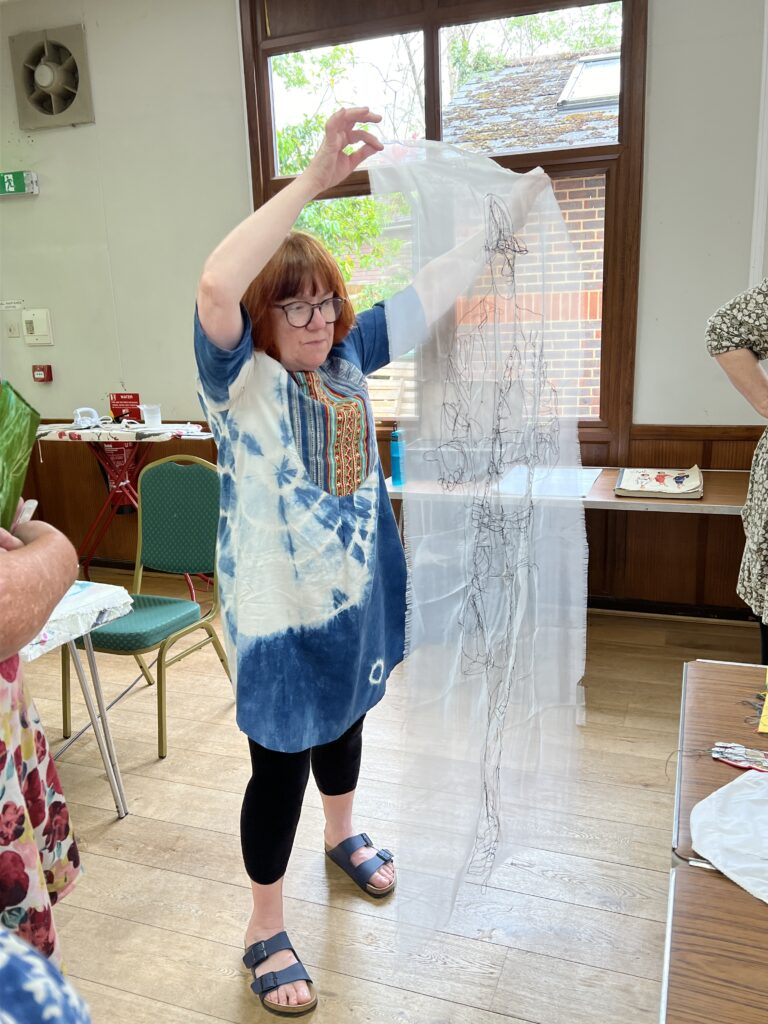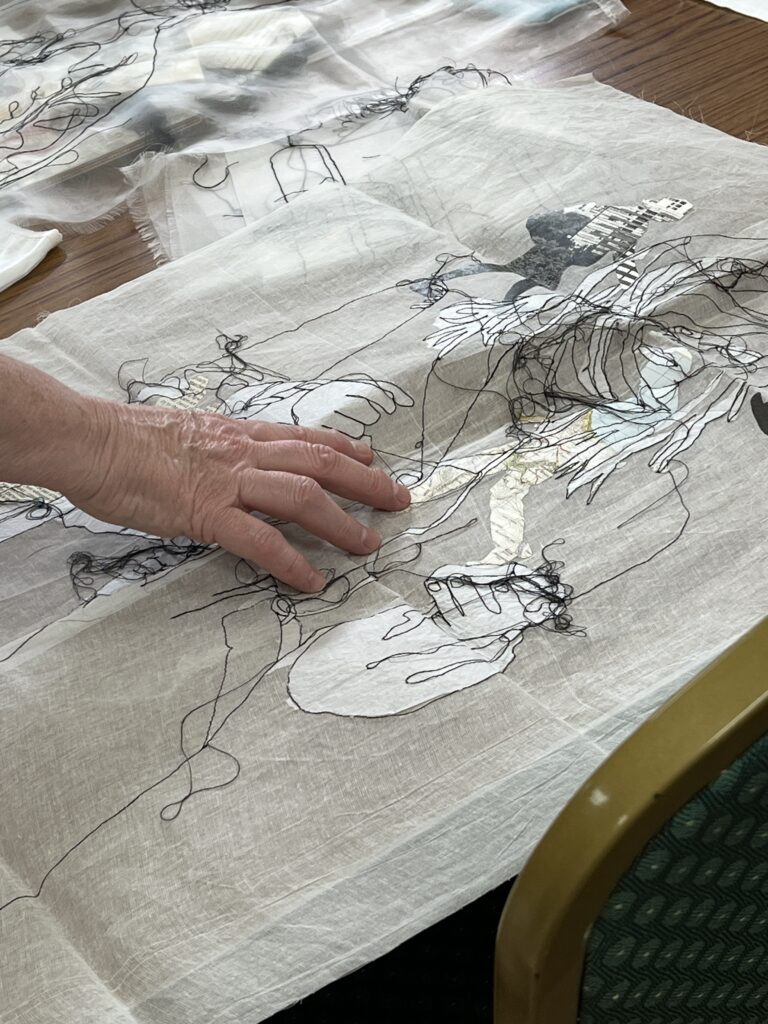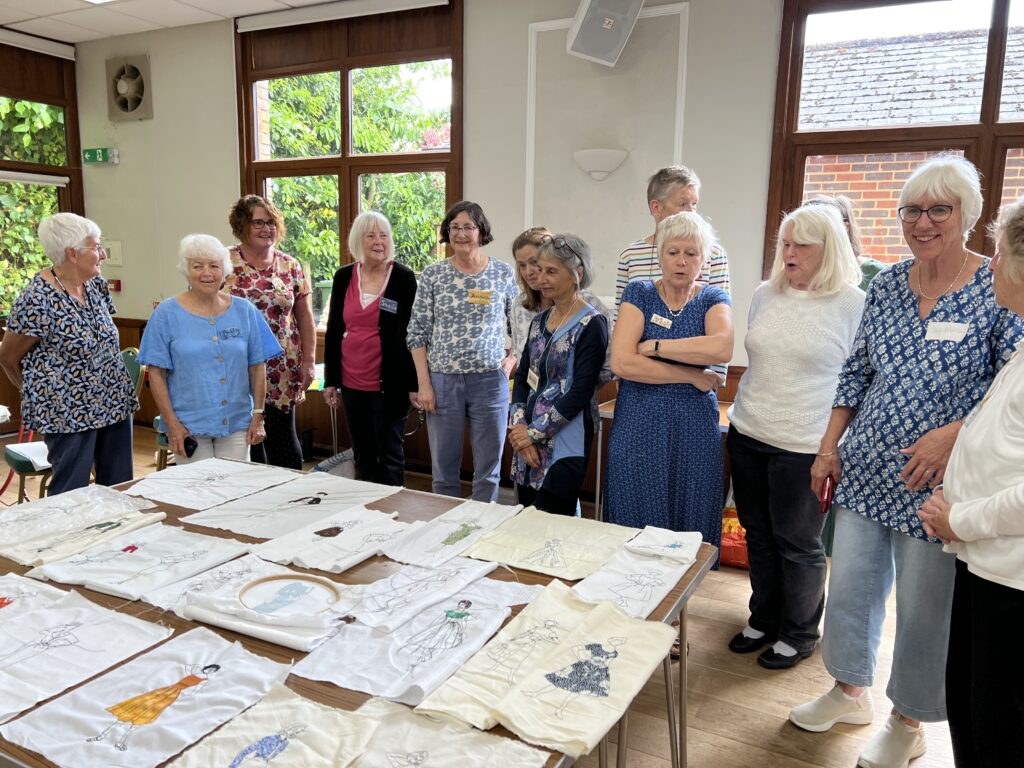8 June 2024

We were very privileged to welcome Rosie James to CQ Surrey for a full day workshop on her machine embroidery techniques.
Firstly, she showed some fabulous examples of her work and allowed us to come and pick them up and get a proper view. Next, she had us trying out different exercises to warm up our machine freehand stitching techniques (after dropping our machines’ feed dogs and adding a embroidery foot).
Rosie had the most fabulous 1950s sewing pattern book, full of those stylish hand-drawn and slightly exaggerated model poses. We each chose a design and traced it (with pencil) onto some tissue paper (not too thick, but not too flimsy, as it needs to be strong enough to go in a hoop and weak enough to pull out of your stitches). We then machine stitched freehand around the pencil marks before removing the paper. I think many of us were surprised at how professional our work looked. Rosie encouraged us to leave some trailing threads to produce an artwork with some movement to it. We broke for a lunch of the usual chat and support before recommencing the workshop.

This time we Identified any areas of the design that we wished to add fabric to. We reversed our images (very important) and traced this section onto the paper (non-glue) side of some Bondaweb. Next, we ironed the Bondaweb to our chosen fabric (using baking parchment over it to protect the iron) and cut out the fabric with Bondaweb attached.
This we placed in the required area of our background fabric, using the tissue paper tracing as a guide, and ironed it on.

Once all the fabric areas were attached, we placed our tissue paper with the design on, on top of the background and coloured fabric pieces. We centred this, so the coloured fabric was behind the correct area of the design. We hooped up for machine quilting, both background fabric and tissue paper together.
As before lunch, we machine embroidered over the traced drawing. The biggest challenge was remembering to drop the presser foot to sew, and the lift the presser foot to move to another area of design, after doing a few securing stitches. If leaving trailing threads, we pulled these out longer, as we went. When restarting in a different area, again do some securing stitches to start with.
Rosie mentioned we could over-paint or colour-wash areas if preferred.
It was another thoroughly enjoyable CQ Surrey day, with lots of interesting work to show for our time!
